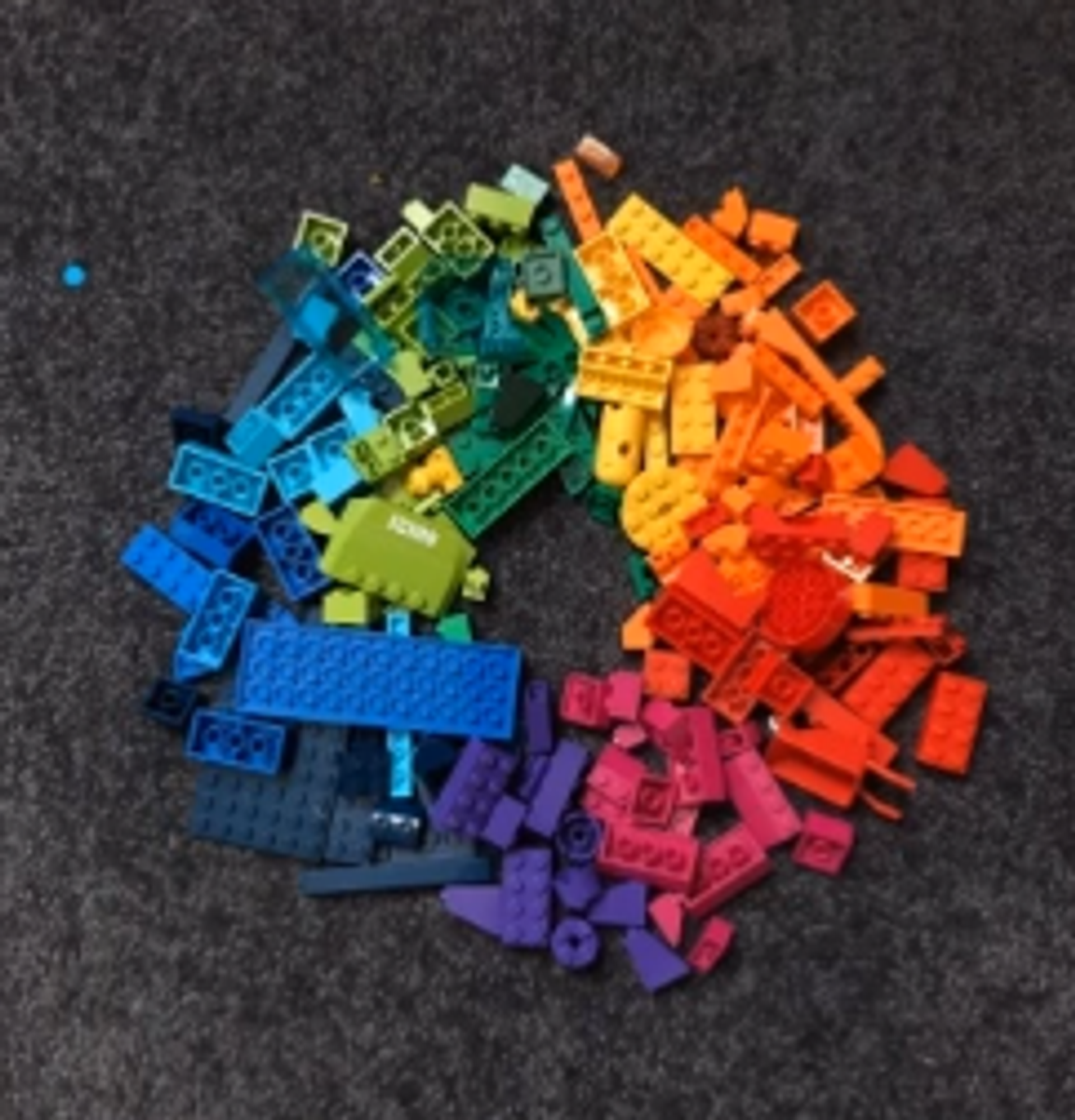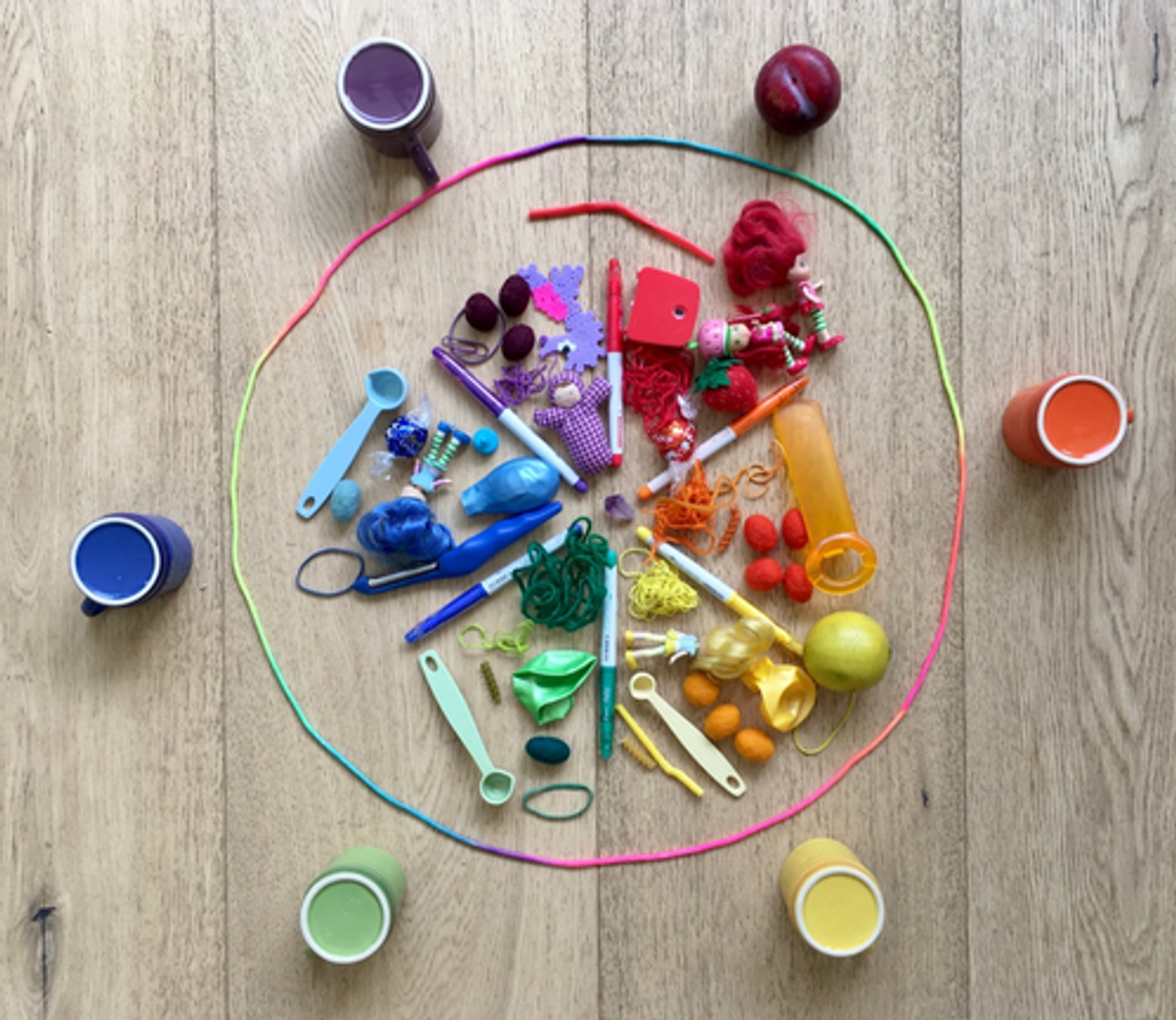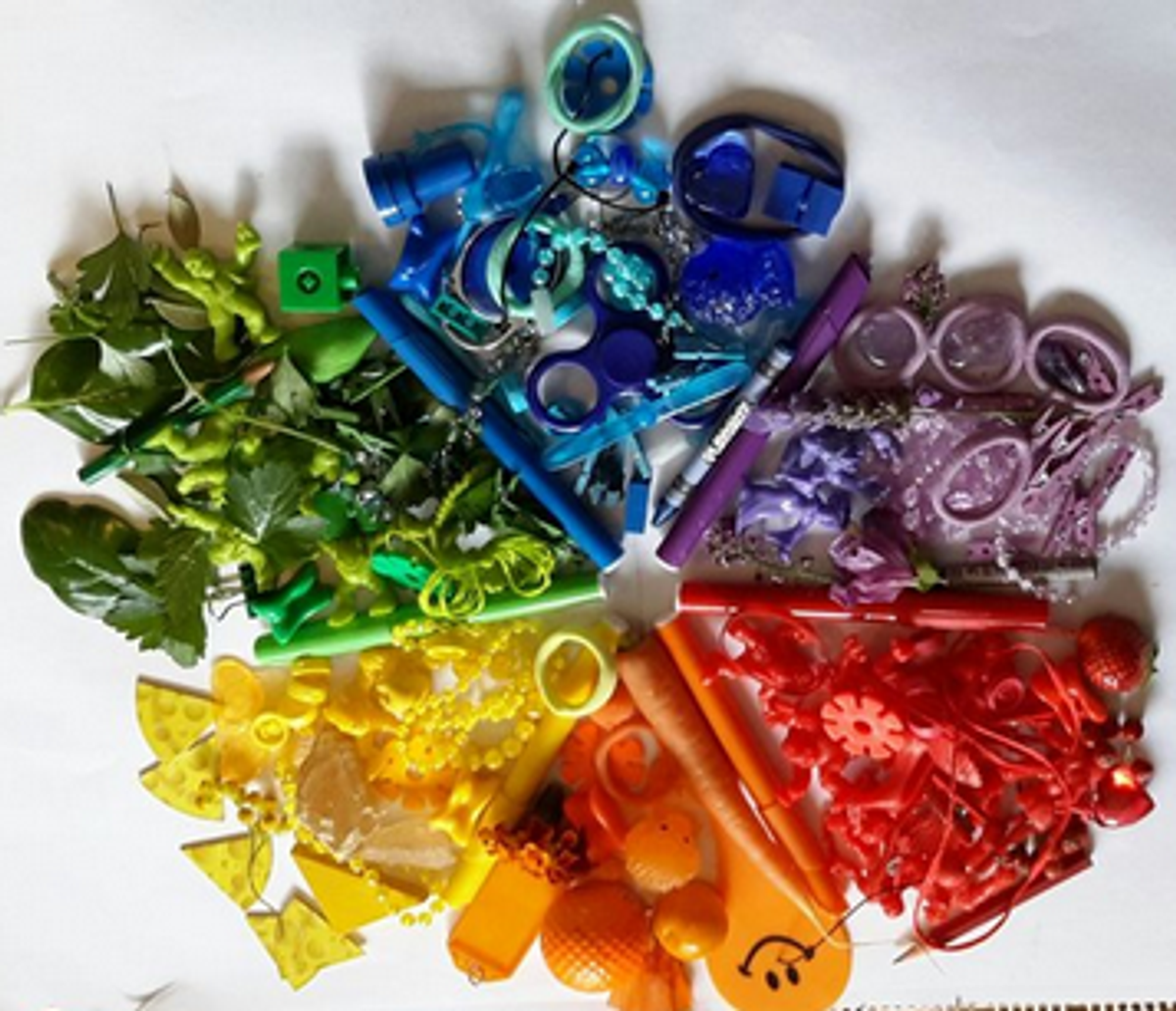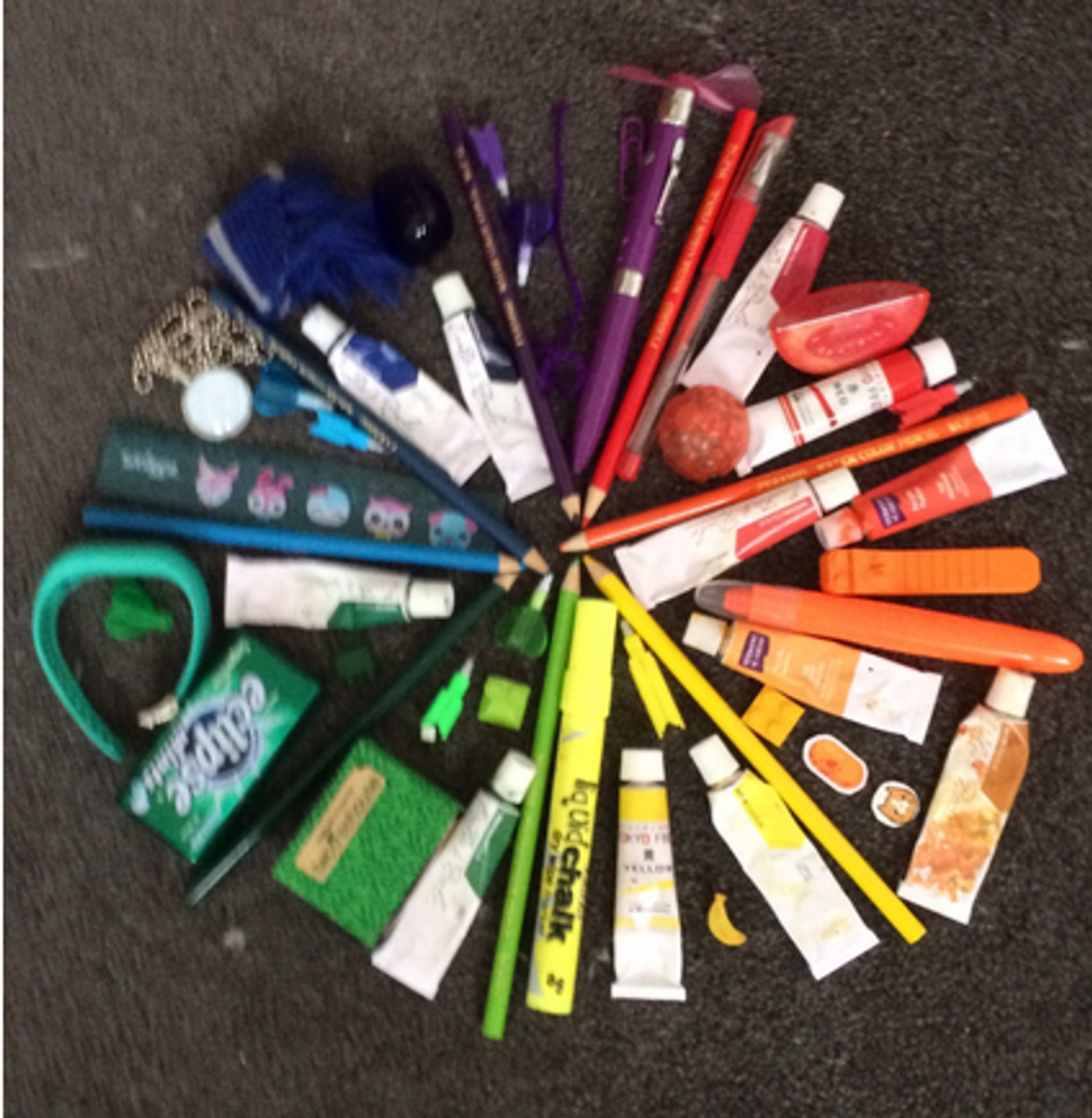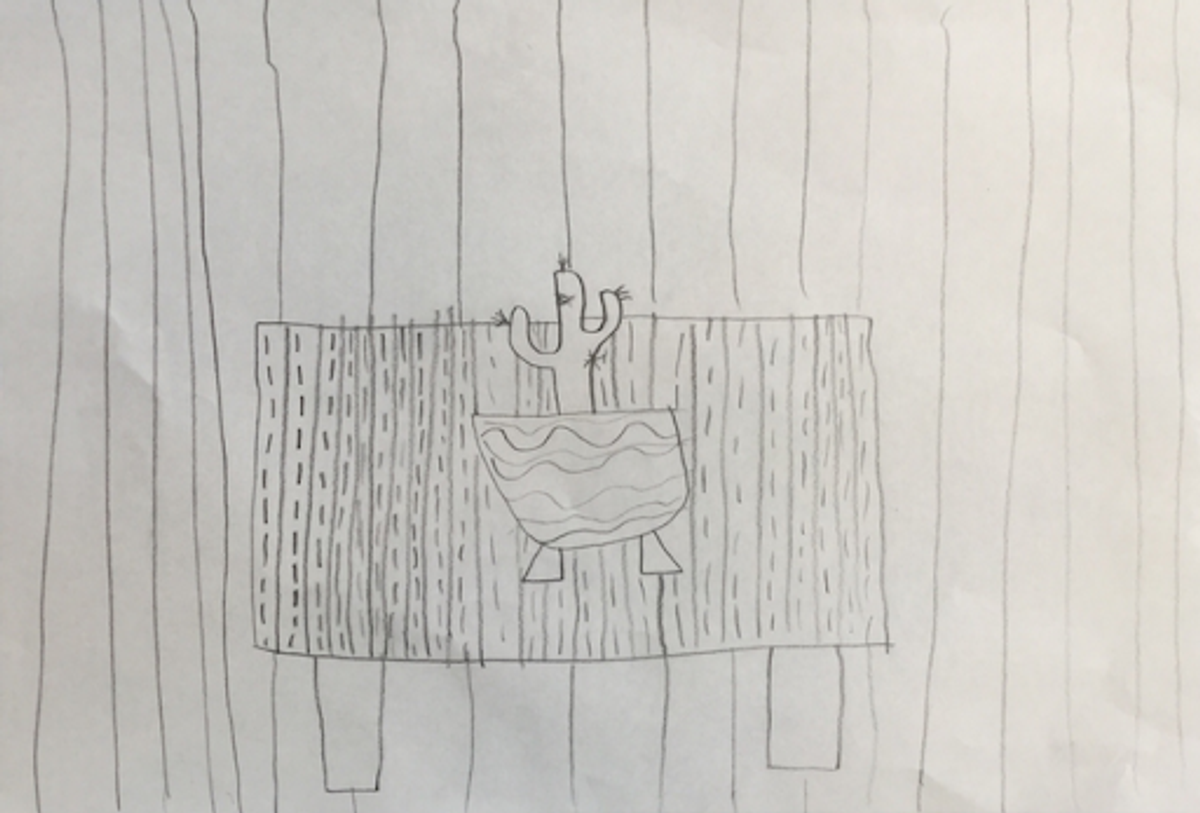Arlington Art
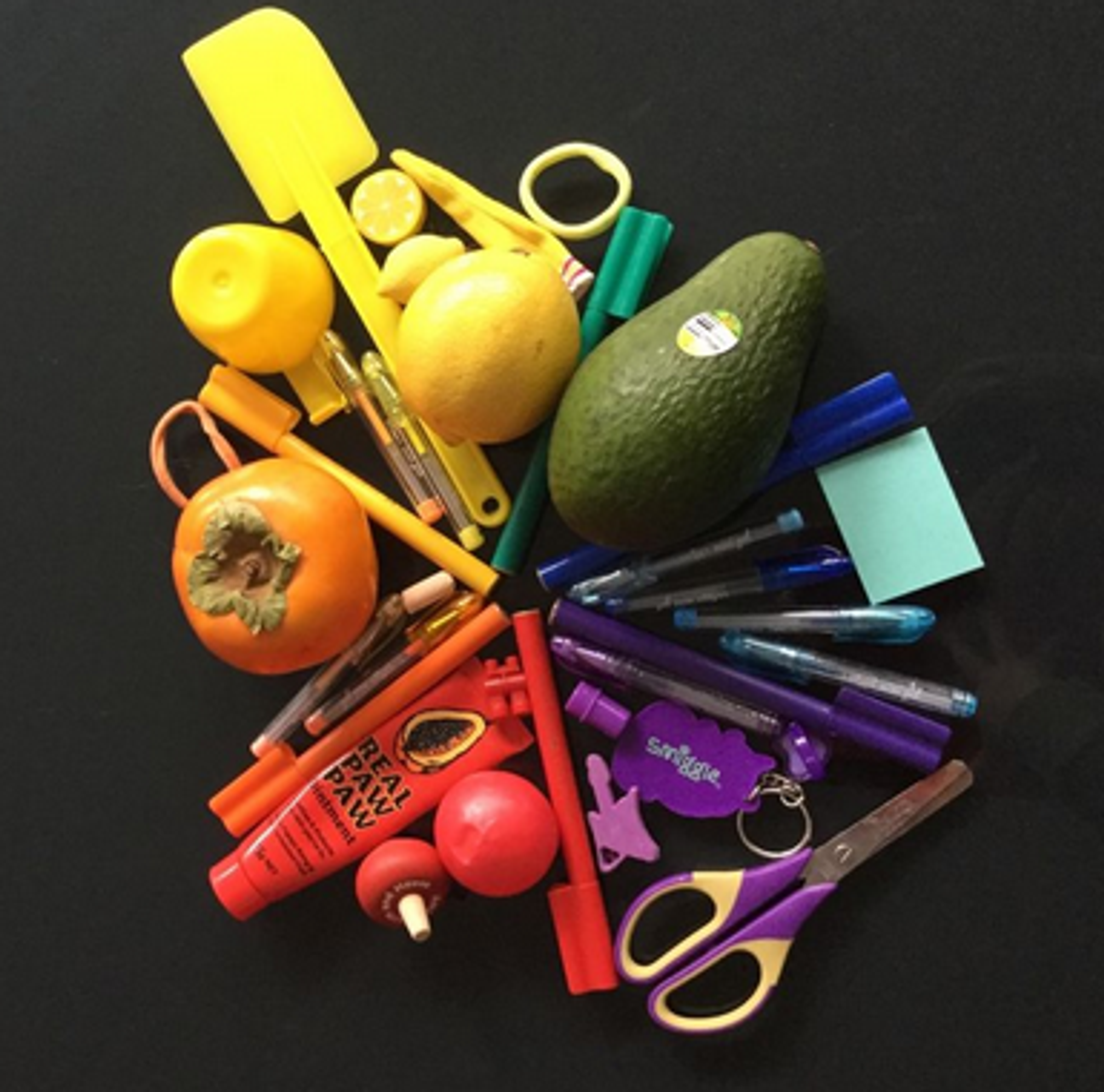
Colour, Colour Everywhere!
The children have been identifying and classifying the colour of objects around their home and organising them into a colour wheel. They are learning about how the colour wheel is organised into Primary, Secondary and for the older children, Tertiary Colours.
As well as becoming familiar with the terminology of the colour groupings, they are gaining an awareness of the colours that surround them and developing a discerning artistic eye.
They have come up with some fantastic and unique ‘found object colour wheels’ and some of them have even included some Easter eggs they’ve not yet eaten.
The children were asked the question:
What was the easiest and hardest colour to find and why?
This question was asked to get the children thinking about why certain objects might usually be a certain colour and also to become aware of colour preferences and choices. Some of their answers to these questions were:
Easiest colour to find?
“Pink, because I love pink & I know where it all is in my house.”
“Green was easiest to find because I could get things from the kitchen and outside.”
“Easiest colour to find - red”
“Red because it’s a primary colour.”
“Blue because we found it first.”
“Red because most of it was on my desk.”
“Red, I think that’s maybe because it’s a primary colour it was more common.”
Hardest Colour to find?
“Orange/red we don't have as many things this colour.”
“Purple was hardest to find.”
“Purple because we didn’t have much purple”
“Purple because I don’t have that many purple things.”
“Bluey purple because it is a less popular colour.”
“Red because we didn't have much in the new house.”
“Purple, I think that maybe because it’s a secondary colour it’s a bit more rare.”
The Sunroom played a quick drawing game in their Zoom session. This game is great for getting children drawing without being too concerned about the content. The game requires them to make many choices they’re not really aware of yet. Some of these are: where objects are on a page and what angle they will draw them from (composition), the size of the object they are drawing (scale), and the types of marks they are making (line and pattern). They had lots of fun and are continuing to play the game this week, eventually having a go at creating their own version to share with each other and their families.
Debrah Brinkworth
Art teacher

